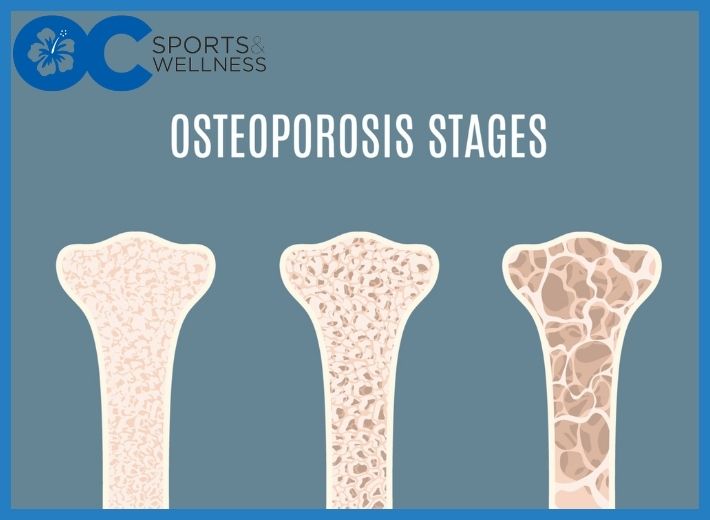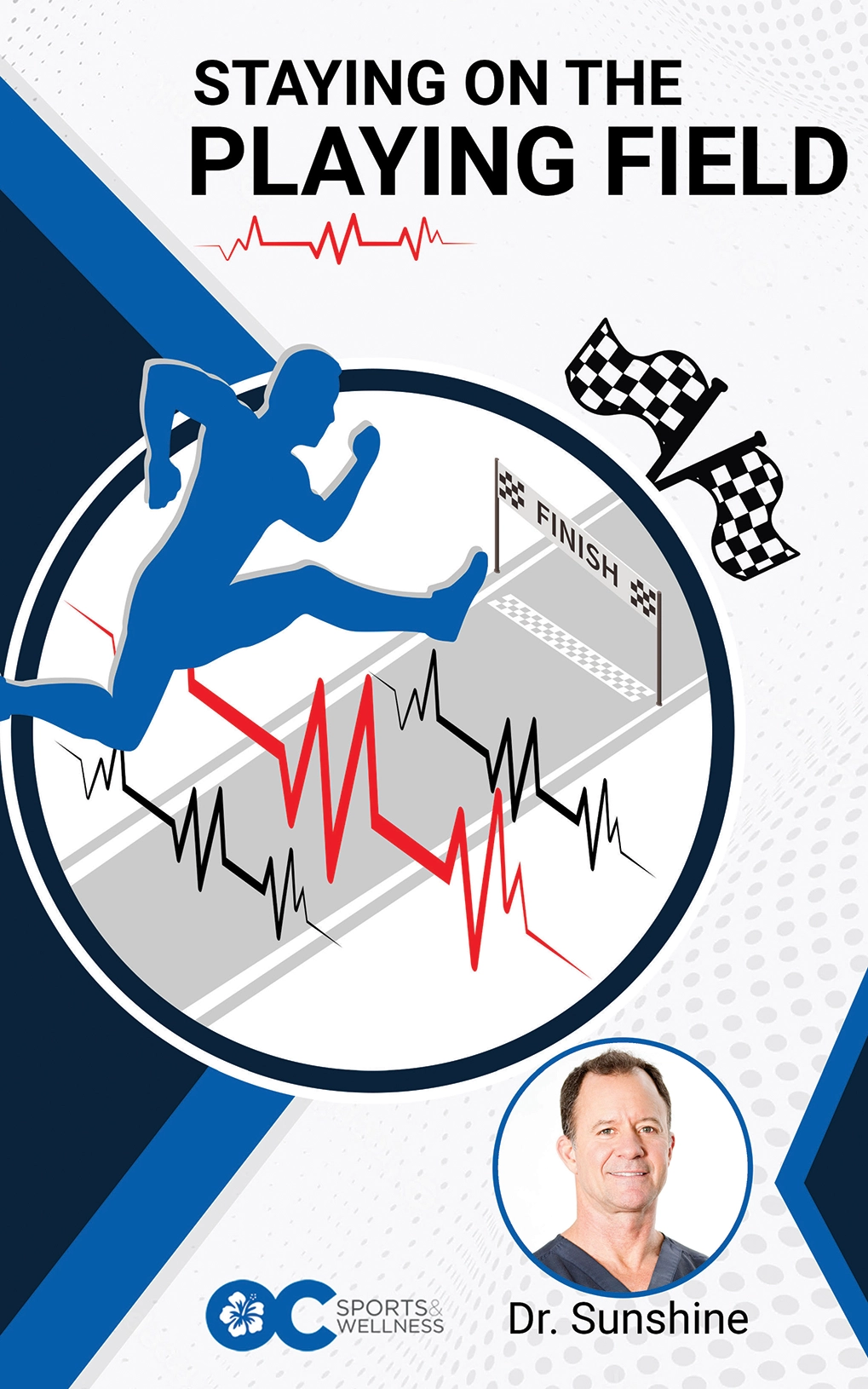Osteoporosis is the most common bone disease in the world, affecting one in three women over the age of 50. Being diagnosed with osteoporosis may be overwhelming, especially when it requires changes to your lifestyle. With support, it’s very possible to maintain a strong quality of life while still staying safe and protecting yourself against future falls or fractures. Learn more about the causes and risk factors of osteoporosis below. Book an appointment with Dr. Sunshine as there are many things we can do for you to ensure you stay healthy and well, and guard against osteoporosis.
Osteoporosis is a bone disease characterized by low bone mass and structural breakdown of bone, eventually causing bones to become fragile and increasing a person’s risk for fractures. Both men and women are affected by osteoporosis. The condition—which is both preventable and treatable—is more common in older adults, but it can affect anyone regardless of age, including children.
In the United States, up to 54 million people have osteoporosis and low bone mass, which increases the risk for osteoporosis, this according to the National Osteoporosis Foundation. Certain risk factors are linked to the development of osteoporosis and increase a person’s risk for the disease. Some people will develop osteoporosis and not have any known risk factors. Some risk factors can be controlled while others can’t.
Here is what you need to know about causes and risk factors for osteoporosis.
Common Causes
Osteoporosis is a result of imbalances between new bone formation and old bone resorption. In bone resorption, osteoclasts break down bone tissues and release certain minerals that transfer calcium from bone to blood. With osteoporosis, the body may fail to form new bone or too much of the old bone is absorbed. It is also possible for both events to occur.
Age
Age is a major contributor to the development of osteoporosis. As you get older, your skeleton begins to lose more bone than it builds. Further, the tiny holes in bones start to get bigger and the solid outer layer in bones gets thinner. That means your bones are less dense. Hard bones become spongy and spongy bones become even more spongy. When bone density loss gets to a certain point, it becomes osteoporosis.
Bones that aren’t dense enough are less likely to stand up to falls and are more likely to break. Most experts suggest screening for osteoporosis starting at age 65, especially for women, but people younger than 65 who are high risk for fractures should start screening earlier.
Usually the loss of bone takes many years before osteoporosis develops. Most of the time, a person will not know they have the condition until they sustain a fracture. By that point, the disease will be advanced and damage from it can be quite serious.
Some of the most common risk factors and causes of osteoporosis include age, gender, hormones, use of certain medications, and some medical conditions.
Low Estrogen, Menopause, and Gender
According to the National Osteoporosis Foundation, up to 80% of the people who have osteoporosis are women. One of the main reasons for the increased risk is that women tend to have smaller and thinner bones in comparison to men. Another reason is that estrogen—the hormone in women that protects bones—sharply decreases when a woman reaches menopause.
The lack of estrogen—a natural consequence of menopause—is known for causing reduced bone density. Menopause is a period when a woman stops ovulating and her monthly periods stop in response to the dramatic estrogen level decrease. The longer a women’s levels remain low, the lower her bone density will be.
Additional factors that increase a women’s risk for osteoporosis include:
- Early menopause—before age 45
- Going a long time without having a menstrual period
- Having irregular periods, an indication a woman is not ovulating properly.
Low Testosterone

Osteoporosis is common in men who have low testosterone levels—a condition called hypogonadism. When testosterone levels stay low, bone mass will become lost over time and eventually lead to weak bones that are susceptible to fractures with minor trauma.
Researchers think most of these cases are related to low testosterone levels. However, the research on a hypogonadism-osteoporosis connection is limited to a few small studies showing an up to 30% risk. Larger studies are needed to confirm this connection.
Medications
Taking certain medications, including long-term oral and injected corticosteroids, can increase a person’s risk for developing osteoporosis. When used for longer periods of time and in higher doses, corticosteroid medications can weaken a person’s bones. Thyroid medications, SSRIs, chemotherapy drugs, and others can also lead to developing osteoporosis. Of course, these medications can be essential in treating a number of conditions. Therefore, you shouldn’t stop any treatment, or change the dose you take, without first talking to your healthcare provider.
If you have other risk factors for osteoporosis, ask your healthcare provider about side effects and risks of medications and supplements you may be taking. Ask how your bone health could be affected and what you can do to reduce your risk for osteoporosis.
Certain Medical Conditions
Some common medical conditions also cause bone loss. Having any one of these conditions puts you at an increased risk for developing osteoporosis.
Osteoporosis caused by another condition is called secondary osteoporosis. Conditions associated with osteoporosis include diabetes, inflammatory autoimmune diseases, thyroid conditions, and malabsorption syndromes:
- Some studies show people with type 1 diabetes tend have to lower than normal bone density, and they may also have low bone turnover and lower bone formation processes.
- Inflammatory autoimmune diseases—such as rheumatoid arthritis and lupus—are conditions where the body attacks its own healthy tissues and cause all-over body inflammation. Inflammatory conditions are believed to increase the risk of bone turnover. People with these conditions also take corticosteroids, which are a leading cause of osteoporosis because they might slow down the processes of bone-building cells.
- Hyperthyroidism and hyperparathyroidism are both known for increasing the risk of osteoporosis. Both conditions affect thyroid hormones. These hormones play an important part in the bone remodeling process and both excess and deficiency can affect bone mass.
- Malabsorption can result from bowel diseases, including Crohn’s disease and celiac disease. These conditions reduce the body’s ability to properly absorb nutrients from the intestines, especially vitamin D and calcium. The result is reduced calcium and vitamin D levels, which increases bone loss and fall risk.
A Small Body Frame and Low Weight
Thin and petite women are a greater risk for developing osteoporosis. One reason is because they have less bone to start with in comparison to women with more body weight and larger frames. Similarly, men who have smaller bone structures also are at a greater risk for osteoporosis than men who are larger and heavier.
Genetics
The genetic tendency to get osteoporosis can be passed through family history. A person may be more likely to develop osteoporosis if one of your parents has the condition. Some ethnic groups also have an increased risk for the condition.
Genetic Tendency
Some people have a strong genetic tendency to develop osteoporosis. In fact, there are numerous genes a person can inherit that increase the potential for developing the condition.
Bone Mass
Bone mass tends to be the most important predictor of risk for osteoporosis. Most people usually achieve their peak bone mass—the highest possible bone mass they can reach—by their late 20s. Peak bone mass is also determined by genetics.
People who have family history and a genetic tendency for the condition will reach peak bone mass much earlier. Family history also plays a part in bone mass, and if your parents have strong bones, there is a higher chance you will too.
Ethnicity
Race plays a part in determining bone mass and increased risk for osteoporosis. African Americans tend to have higher bone mass than Caucasians and Asians. Moreover, Hispanics usually have a lower bone mass than African Americans, but bone mass is still higher for this group than it is for Caucasians and Asians.
Lifestyle Risk Factors
There are many risk factors of osteoporosis that may be out of your control. However, certain lifestyle risk factors that are in your control can also include your risk.
Not Getting Vitamin D and Calcium
It is important to eat a diet loaded with calcium and vitamin D because these nutrients work together to promote bone health. Calcium encourages healthy bones and vitamin D helps the body to absorb calcium effectively.
A Sedentary Lifestyle
Being active helps to keep muscles and bones strong and ward off osteoporosis. Strong bones are also less likely to break.
Smoking
There is a direct link between tobacco use and decreased bone mass.12 There are several reasons for this connection. First, chemicals found in cigarettes can interfere with the functioning of cells in your bones. Additionally, smoking can inhibit calcium absorption. It can also reduce the protection estrogen offers bones. Studies have shown smoking increases the risk for a fracture, and it can also slow down healing of fractures.
Drinking Alcohol In Excess
Alcohol has a negative effect on bone health. One of the reasons is it interferes with the balance of calcium and absorption of vitamin D in the body. Heavy drinking can also cause hormone deficiencies in both men and women. Excess alcohol consumption may also kill osteoblasts, bone making cells. Additionally, alcohol abuse can affect balance and gait and lead to falls that often result in fractures due to thin bones and nerve damage.
Osteoporosis and associated fractures are not a normal part of aging. There is a lot you can do to protect your bones and it is never too late to take action. The habits you adopt now and into the future can affect your bone health for the rest your life.
You can protect your bones by getting enough vitamin D and calcium and eating a well-balanced diet that includes foods good for bone health, including fruits and vegetables. You should also engage in regular exercise to keep your bones and muscles strong. Lastly, avoid smoking and limit your alcohol consumption.
At OC Sports and Wellness, we help our patients using the principles of integrative medicine to achieve the best possible health outcomes through in-depth health assessments, testing, and lifestyle changes. Take the first step on your journey to health and prevention. Visit our Facebook page or give us a call to learn more at 949-460-9111.
Reference: [https://www.verywellhealth.com/osteoporosis-causes-4783128]


